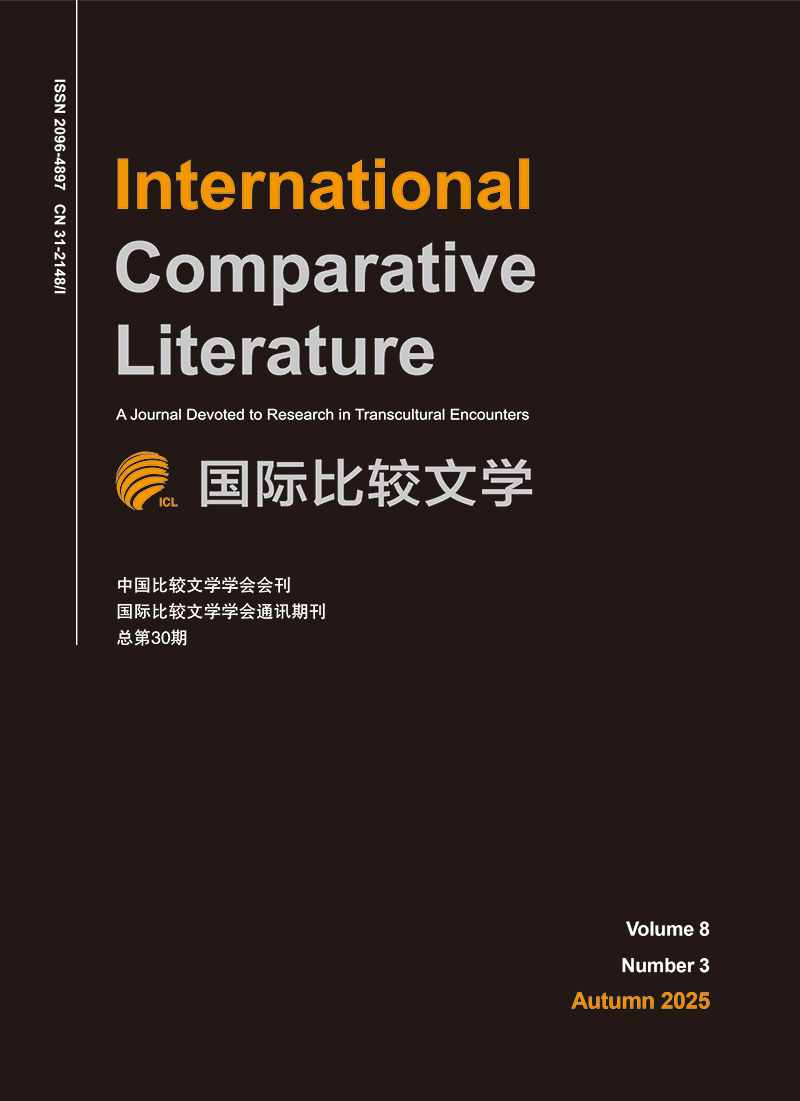|
[1]
|
Chang, Iris. The Rape of Nanking. New York: Basic Books, 1997.
|
|
[2]
|
Derrida, Jacques. Specters of Marx: The State of the Debt, the Work of Mourning and the New International. Translated by
|
|
[3]
|
Peggy Kamuf. New York: Routledge, 1994.
|
|
[4]
|
DING, Ling.“When I Was in Xia Village.” I Myself Am A Woman: Selected Writings of Ding Ling. Edited by Tani E.
|
|
[5]
|
Barlow, Gary J. Bjorge. Boston: Beacon Press, 2001.
|
|
[6]
|
Gluck, Carol.“Operations of Memory: ‘Comfort Women’ and the World.” In Ruptured Histories: War, Memory, and the
|
|
[7]
|
Post-Cold War in Asia. Edited by Sheila Miyoshi Jager and Rana Mitter. Cambridge, MA: Harvard University Press,
|
|
[8]
|
2007, 47-77.
|
|
[9]
|
Hansen, Jim.“Formalism and Its Malcontents: Benjamin and De Man on the Function of Allegory.” New Literary History
|
|
[10]
|
35, no. 4 (Autumn, 2004), 663-83.
|
|
[11]
|
Hayashi, Kyōko.“Masks of Whatchamacallit.” In More Stories by Japanese Women Writers. Edited by Kyoko Selden and
|
|
[12]
|
Noriko Mizuta. New York: M. E. Sharpe, 2011, 52-75.
|
|
[13]
|
Ibuse, Masuji. Black Rain. Translated by John Bester. Tokyo: Kodansha International, 2012.
|
|
[14]
|
Matthews, Graham J.“Chinese Historical Fiction in the Wake of Postmodernism: Two Versions of Yan Geling’s The
|
|
[15]
|
Flowers of War.” MFS Modern Fiction Studies 62, no. 4 (Winter 2016): 659-77.
|
|
[16]
|
Qiu, Peipei, Su Zhiliang and Chen Lifei, eds. Chinese Comfort Women: Testimonies from Imperial Japan’s Sex Slaves.
|
|
[17]
|
Oxford: Oxford University Press, 2014.
|
|
[18]
|
Seldon, Kyoko, Mark Seldon, eds. The Atomic Bomb: Voices from Hiroshima and Nagasaki. New York: M. E. Sharpe, Inc.,
|
|
[19]
|
1989.
|
|
[20]
|
Tachibana, Reiko.“Seeing between the lines: Imamura Shōhei's Kuroi ame (Black rain).” Literature Film Quarterly 26, no.
|
|
[21]
|
4 (1998), 304-12.
|
|
[22]
|
Thornber, Karen.“Responsibility and Japanese Literature of the Atomic Bomb.” In Imag (in) ing the War in Japan:
|
|
[23]
|
Representing and Responding to Trauma in Postwar Literature and Film. Edited by David Stahl and Mark Williams.
|
|
[24]
|
Boston: Brill, 2010, 269-302.
|
|
[25]
|
Yan, Geling. The Flowers of War. Translated by Nicky Harman. New York: Other Press, 2006.
|
|
[26]
|
董炳月: 《贞贞是个“慰安妇”——丁玲〈我在霞村的时候〉解析》,《中国现代文学研究丛刊》 2005年第2期,第211—
|
|
[27]
|
219页。
|
|
[28]
|
[DONG Bingyue.“Zhenzhen shige ‘weianfu’: DING Ling ‘Wo zai xiacun de shihou’ jiexi” (Zhenzhen was an“Army
|
|
[29]
|
Sexual Slave”—— an Analysis on“When I was in Xia Cun” by Ding Ling). Zhongguo xiandai wenxue yanjiu congkan
|
|
[30]
|
(Modern Chinese Literature Studies) 2 (2005): 211-19.]
|
|
[31]
|
黄丹銮:《从“贞贞的故事”看贞操观念与中国女性革命》,《中国现代文学研究丛刊》 2017年第9期,第124—132页。
|
|
[32]
|
[ HUANG Danluan.“Cong‘Zhenzhen de gushi’ kan zhencao guannian yu zhongguo nüxing geming” (A Study of the Idea
|
|
[33]
|
of Chastity and Women’s Revolution in China in“The Story of Zhenzhen”). Zhongguo xiandai wenxue yanjiu congkan
|
|
[34]
|
(Modern Chinese Literature Studies) 9 (2017): 124-32.]
|
|
[35]
|
李向东、王增如:《丁玲传》,北京:中国大百科全书出版社, 2015年。
|
|
[36]
|
[ LI Xiangdong and WANG Zengru. DING Ling zhuan (A Memoir of Ding Ling). Beijing: Encyclopedia of China Publishing House, 2015.]
|
|
[37]
|
吴佳楠:《女性的伟大与悲哀:〈我在霞村的时候〉中贞贞形象分析》,《重庆理工大学学报(社会科学版)》 2010年第
|
|
[38]
|
7期,第111—114页。
|
|
[39]
|
[ WU Jianan.“Nüxing de weida yu beiai: ‘Wo zai xiacun de shihou’ zhong Zhenzhen xingxiang fenxi” (A Woman’s Glory
|
|
[40]
|
and Lament: The Image of Zhenzhen in“When I Was in Xia Village”). Chongqing ligong daxue xuebao (shehui kexue
|
|
[41]
|
ban) (Journal of Chongqing University of Science and Technology[ Social Sciences Edition]) 7 (2010): 111-14.]
|

 点击查看大图
点击查看大图



 下载:
下载:

